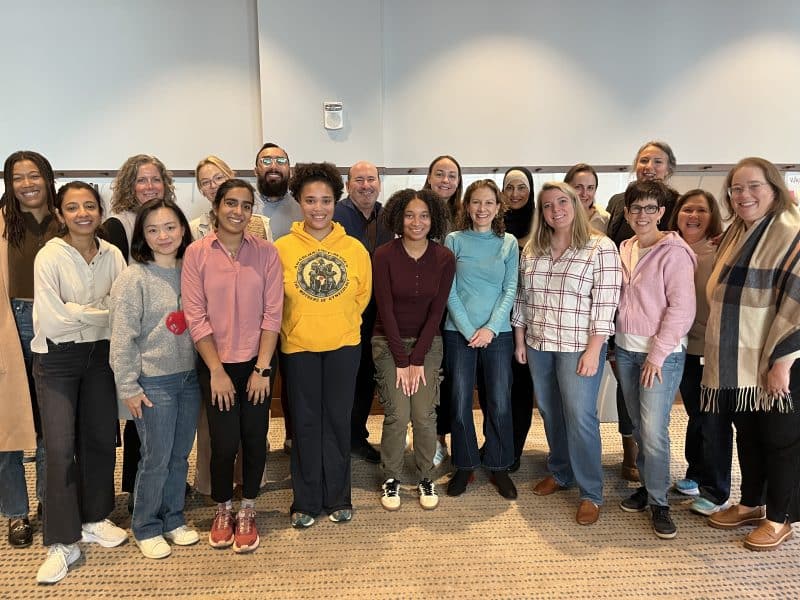Youth mental health is the focus of a new community-wide coalition
The group has released a 10-year plan to change practices, policies, and attitudes in schools, the mental health system, and the community at large.

A broad coalition of people from organizations that connect with Greater Cincinnati teens and young adults has created a long-term strategy to improve the mental health of youth, which many say has reached a crisis.
The new organization is called Hopeful Empowered Youth, and goes by the acronym HEY!, a name and abbreviation suggested in part by youth members of the organization, who will continue to play a key role in the effort.
The group has released a 10-year plan designed to improve the environment that youth find themselves in today by changing practices, policies, and attitudes in schools, the mental health system, and the community at large.
Several hundred community leaders, health care providers, educators, policy makers, parents, and youth have been working for more than a year to examine the state of mental health among the region’s young people. That effort resulted in a comprehensive assessment of the state of youth mental health and the environment, including schools and treatment providers, that they live in.
That report, published earlier this year, found that “Greater Cincinnati is grappling with a youth mental health crisis. Mental health needs have grown more acute, children face challenges at ever earlier ages, mental health providers are strained, and caregivers are overwhelmed.”
To begin to respond to the crisis, the group formed HEY! as a formal organization with goals, a strategy, and funding to work to create change among the diverse range of organizations that work with youth. It’s just-released plan establishes a time frame of 10 years to improve youth behavioral health and enhance their sense of well-being in the community.
“For us to bring the number of stakeholders together to drive measurable impact is going to take 10 years,” said Clare Zlatic Blankemeyer. She is the recently named executive director of HEY!, and was previously head of the Cincinnati office of the GreenLight Fund, a national philanthropy focused on family poverty.

“This isn’t going to happen overnight,” she said. “It took us years to get here in the environmental conditions that are impacting the well-being of youth. So we know we need to have a long-haul plan.”
However, she said, “That doesn’t stop us from trying things immediately.” The coalition will assess and measure progress along the way, change course if necessary, and adapt to changing conditions in the community.
The effort will focus on three main areas:
Schools: The aim is to make mental well-being a foundation of the region’s school systems by strengthening mental health training for teachers and staff, increasing access to prevention and intervention programs, and promoting school programs that foster connection and belonging.
Treatment: The goal is to make high-quality, culturally appropriate care accessible to all children and young adults by improving the coordination of care among providers, supporting evidence-based, culturally responsive care, and increasing the number of mental health professionals in the community.
Communities and care givers: The overarching goal is to make the community a more compassionate and empathetic place by equipping adults to promote the well-being of youth, building and expanding safe spaces and youth programs, and integrating mental wellness into all corners of the community.
“We need to look at behavioral health in schools, in communities with caregivers, and in treatment settings,” Blankemeyer says. “We can’t isolate it to just one of those.”
Working groups have been formed comprised of professionals in each of those areas.
HEY! has initially been supported with $5 million donated by 13 funders led by health-focused philanthropy bi3, Interact for Health, and United Way of Greater Cincinnati.
In developing the assessment and subsequent strategy, the organization enlisted youth to be a part of the process. About 150 youth between the ages of 16 and 24 applied to be part of the program and 25 youth fellows were selected, many of whom have had experience with the foster care system or the mental health system. “These are young people who have personal experiences with systems, with their own mental health care journeys, and want to make an impact here,” Blankemeyer said. The first group recently completed a six-month fellowship and another group will be recruited soon.

Brooke Winstead, a 24-year-old senior at the University of Cincinnati, was part of the first group. She’s optimistic about the program and its reliance on people of her age. “As long as they are willing to keep centering us and allowing us space to share our stories, to share things that we might want to see, and keep holding space for us, that gives me hope,” she says.
“So many times youth are brought in as an opinion, but then over-spoken by adults,” said Quinn Merriss, another youth fellow. “So, actively involving youth in not only the planning but the implementation and working together with these adults is amazing and inspiring.”
The ambitious effort to align school systems, mental health providers, and many other community stakeholders comes as Greater Cincinnati and the country is experiencing an alarming increase in mental health issues among youth:
- From 2009 to 2019, the percentage of high school students seriously considering attempting suicide increased by 36%. The percentage reporting persistent feelings of sadness or hopelessness increased by 40%.
- In just four years, from 2011 and 2015, youth psychiatric visits to emergency departments for depression, anxiety, and behavioral challenges increased by 28%.
- Over the ten-plus years between 2007 and 2018, suicide rates among youth ages 10 to 24 increased by 57%.
These statistics are taken from U.S. Surgeon General Vivek Murthy’s 2021 advisory “Protecting Youth Mental Health.” They show what was happening before the Covid-19 pandemic became a nearly all-consuming part of life in 2020. The impact of the pandemic magnified those trends. Symptoms of anxiety, depression, and other mental health disorders doubled during the pandemic, with 25% of youth experiencing depressive symptoms, and 20% experiencing anxiety symptoms. In early 2021, emergency department visits for suspected suicide attempts were 51% higher for teen girls and 4% higher for teen boys compared to just two years earlier.
The coalition behind HEY! wants to move “upstream” of the problem and address not just the immediate emotional challenges that kids experience but the much more difficult goal of changing the systems, environments, and attitudes that kids are immersed in order to prevent emotional imbalance and build resilience. As Ross Meyer, a vice president for Interact for Health has said, “It’s not about fixing young people, it’s about fixing the conditions around young people in ways that are going to be more conducive to their mental health and well-being.”
The effort will have an emphasis on addressing the issues faced by youth in the mental health, justice and mental health systems, LGBTQ youth, and children of color.
“We’re all impacted by this,” Blankemeyer said. “I’m impacted by this. I see it in my life, in my family, among my friends. I want to be part of a world where we have greater community and belonging.”
READ MORE: Soapbox series Amplifying Youth Voices















